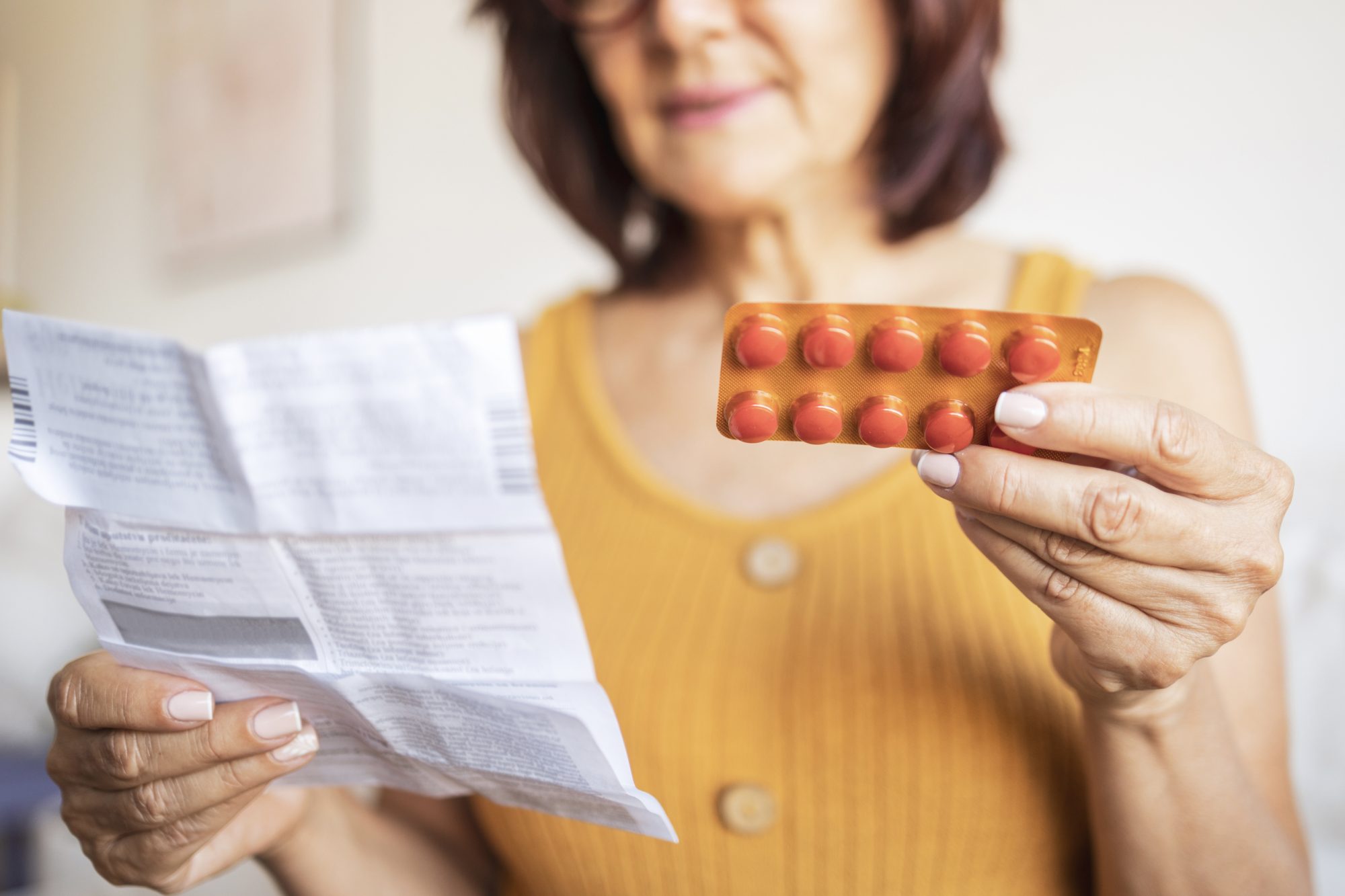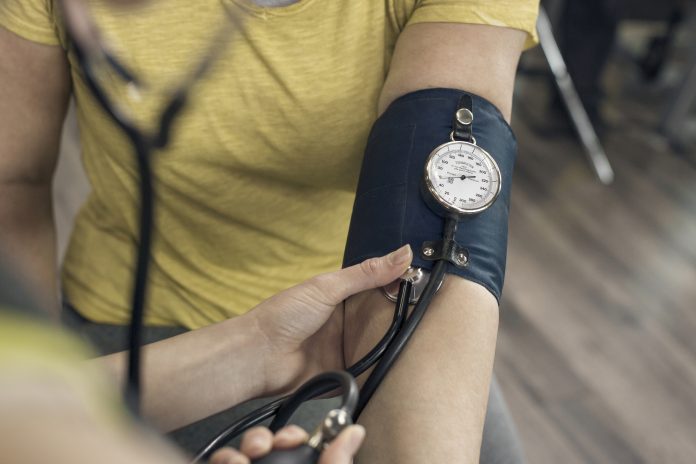It may surprise you to know that 60% of women over the age of 65 have high blood pressure. So why are postmenopausal women more at risk of high blood pressure? Let’s find out
Blood pressure is one of the most important risk factors for health or disease. Cardiovascular disease (CVD) is the second highest cause of death in women in the UK, after Alzheimer’s Disease and dementia
It’s particularly important as high blood pressure can be treated and the risk of CVD reduced, so long as it is picked up early enough.
Why are postmenopausal women more at risk of high blood pressure?
The cardioprotective effects of oestrogen
Women are protected from CVD before menopause by their own oestrogen. Women start to develop atherosclerotic changes in their arterial walls as early as their 40s in association with falling oestrogen levels. After menopause, calcification and inflammation develop within the vessel walls. Most CVD events – angina, heart attacks and strokes – occur in women after the age of 63.
The probable cardioprotective effects of HRT and the ‘window of opportunity’
Various research studies have confirmed that women who take HRT in their 50s, and continue through the next 5-10 years, have a reduced risk of CVD. But women who do not start HRT until their 60s, have an increased risk of CVD events, probably because oestrogen causes vasodilation of the calcified endothelium (the cells lining the blood vessel wall) can destabilise plaques which have formed on the arterial wall during atherosclerosis. Fragmentation of plaques or rupture of the vessel wall is the cause of micro-emboli (clots) or haemorrhage, which block arteries or damage heart or brain tissue, causing heart attacks and strokes.

How does menopause cause high blood pressure?
Stiffening of the arterial walls
The rise in systolic (upper reading) blood pressure is mostly due to the increasing stiffness of the arterial wall that occurs with ageing. Blood pressure rises more steeply in the 5th decade in women than it does in men probably largely due to the absence of oestrogen.
Increased activation of the RAS system
The decline in oestrogen leads to an increase in the renin-angiotensin system (RAS) in the kidney. This is the specialised enzyme system that controls blood pressure within the human body. Increased RAS activity leads to higher levels of angiotensin-11 and aldosterone, which results in sodium retention, vasoconstriction and raised blood pressure.
The effects of HRT on the kidney
Oral HRT increases levels of the protein angiotensinogen, which causes vasoconstriction, which raises blood pressure. However, it also reduces renin levels which largely counteracts these blood-pressure-elevating effects.
Increased salt-sensitivity
Postmenopausal women have increased salt sensitivity – meaning their kidneys have an exaggerated response to the ingestion of salt.
Being overweight or obese
66-69% of UK women over the age of 45 are overweight or obese. Obesity results in oxidative stress, insulin resistance and raised levels of systemic inflammation – all of which are associated with hypertension. In addition, obese postmenopausal women have increased sympathetic nervous system activity, which causes high pressure.
Metabolic syndrome
Being postmenopausal increases the risk of metabolic syndrome by 60%. The risk is highest in postmenopausal women with obesity, but metabolic syndrome can be present in those with a BMI in the normal range.
Metabolic syndrome is the name given to a dangerous cluster of risk factors that increase CVD risk. These are – abdominal obesity, high blood pressure, raised fasting glucose, raised triglyceride levels, and low HDL (’good’) cholesterol levels. In one recent 2023 study, the risk of CVD in postmenopausal women with metabolic syndrome was highly significantly increased by a factor of 13.8.
Do you know your blood pressure?
High blood pressure has no symptoms
Raised blood pressure has no symptoms. A woman wouldn’t know she has it – until she has a heart attack or a stroke. This is very sad as if picked up early, high blood pressure can be easily treated.
Many postmenopausal women do not know their blood pressure
According to recent statistics, almost 30% of high blood pressure remains undiagnosed in women aged 55-64, around 27% in women aged 65-74, and around 21% in women aged 75 and over.
All UK adults should have their blood pressure measured at least once every 5 years. Doctors are encouraging women to have a blood pressure machine at home and be able to regularly take their own blood pressure. Just as most women know what they weigh, they should know their own blood pressure.
What’s a normal blood pressure reading?
Blood pressure does normally increase a little with age. It also varies during the day depending on things like exercise, food, alcohol, stress and sleep. However –
- A normal blood pressure is between 90/60 and 120/80 mm Hg.
- High blood pressure is diagnosed if blood pressure is over 140/90 mm Hg.
Advice about managing high blood pressure in postmenopausal women
HRT is not a cause of high blood pressure
At present, HRT should not be prescribed solely to lower blood pressure, although it does tend to have a blood pressure-lowering effect. HRT is prescribed to help women with menopausal symptoms, including hot flashes, night sweats, insomnia, fatigue and brain fog. However, it is thought to have an additional CVD benefit. There are non-hormonal options for women who cannot take HRT.
HRT is not a cause of high blood pressure
Improve lifestyle factors
Women are strongly advised to do what they can to lower their CVD risk. This means stopping smoking, losing weight, eating healthily and taking more physical exercise.
Eat a healthy diet
Diet is extremely important. Women need to have a low-salt diet and not eat processed and ultra-processed foods. Heart-healthy foods are fresh fruit and vegetables – at least 5 – some would say 10 a day – along with whole grains, nuts and seeds. Plenty of lean protein such as chicken or fish are vital, as well as healthy unsaturated (plant-based) fats such as olive, sunflower, rapeseed or avocado oil. Cut back on red meat. Avoid high fat, high sugar, high salt foods – cook from scratch at home with good quality ingredients.
One excellent option in the Mediterranean Diet which fulfils all these categories.
Reduce alcohol
Reduce your alcohol consumption or stop drinking altogether. Alcohol is empty calories. Over the long term, alcohol raises blood pressure.
Lower stress
De-stress in any way you can. This could be yoga, meditation or Tai Chi. Exercise such as brisk walking helps lower stress. Hot and cold therapy is helpful. Even reading a book for 30 minutes a day can lower stress. Factor time to destress into your day every day.
Improve your sleep
Get enough sleep. Much research links insomnia to high blood pressure. Make sure you establish a good night-time routine, winding down for bedtime, have a cool, dark bedroom and a comfortable mattress. Switch off blue light devices (TVs, computers, iPads and smartphones), 2 hours before bedtime. No caffeine or alcohol with 6 hours of going to bed.
Take blood pressure-lowering medication as advised by your GP
High blood pressure can be treated with medication in the usual way. Postmenopausal women often get good blood pressure control with diuretics and ACE (angiotensin-converting enzyme) inhibitors.
Final thoughts on blood pressure, getting older and being a postmenopausal woman
Twice as many women die from heart disease as from breast cancer. 26,000 people under the age of 75 die every year in the UK from CVD. Its such a dreadful shame as high blood pressure is a major risk factor for CVD, yet it can be successfully treated and increase life expectancy. But it does rely on postmenopausal women having their blood pressure taken and acting on the result. Too often, the first time a woman finds out she has high blood pressure is when she has a heart attack or a stroke.
Many research studies have confirmed that lowering high blood pressure saves lives by lowering CVD risk.
- When did you last have your blood pressure measured?
- What could you do to improve your CVD risk today?
This piece was written and provided by Dr Deborah Lee, Dr Fox Online Pharmacy











